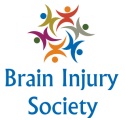
If you’re shopping for a vehicle, whether new or used, one of your main objectives should be safety and the features that can protect you and your loved one in an accident.
Head and brain injuries, and injuries to the neck are some of the most common and serious physical harm sustained by people involved in automobile accidents.
Depending on the severity of the traffic collision, you may sustain a mild, moderate, or severe head injury, even if there is no outward sign of damage. Neck injuries can range from whiplash and strains to serious problems such as cervical dislocation.
Choosing a vehicle with a full complement of safety features can be crucial to keeping you from suffering long-term injuries from a crash.
While most of today’s newer vehicles have good crash test ratings from the Insurance Institute for Highway Safety and the National Highway Traffic Safety Administration, others are lacking in protection during rollovers and rear and front crashes. Go to IIHS to review a vehicle rating system as you shop for a new car.
Two key things to remember:
- Size and weight are important for safety, with larger and heavier vehicles providing more structure to absorb the energy of a collision and protect people inside the vehicle, according to the IIHS.
- Crashworthy design means a vehicle has a strong compartment to protect people during crashes and rollovers, as well as good airbags to keep people from being tossed around and to stop objects from hitting them.
If you’re looking at older models, IIHS suggests considering these factors:
- Frontal crashworthiness: Look for vehicles with good ratings on front crash testing, because their drivers are 46 percent less likely to be killed in a crash than drivers in vehicles with poor ratings, according to IIHS. Many newer vehicles earn IIHS’s best grades for frontal crashworthiness.
- Side crashworthiness: Seek vehicles with good side impact crash ratings in addition to airbags to protect the head. Drivers are 70 percent less likely to be killed in a driver side crash if the vehicle has a good side barrier test rating. Studies show that side airbags reduce the risk of death significantly and some side airbags can protect motorists if the vehicle rolls over. Most models since 2008 are equipped with side airbags.
- Roof strength: Strong roofs are less likely to cave in during a crash, thus protecting the driver’s head and neck, especially in a rollover wreck. Roof ratings started with 2008-09 models.
- Head restraints: Good seat/head restraint ratings mean whiplash injuries will be reduced in rear end crashes. Vehicles with good seat/head restraint combination ratings result in 15 percent fewer insurance claims for neck injuries than vehicles that are given poor ratings. Adjusting the head restraint to fit your head also increases protection.
- Electronic stability control: This feature is standard on models made since 2012 and is available on some older cars as well. This extension of antilock brake technology gives motorists better control on curves and slick roads, lowering the chance of a fatal one car crash by 50 percent and a fatal rollover by up to 80 percent.
Crash Avoidance Systems
Avoiding accidents is the best way to prevent injuries. New systems called crash avoidance technology available on some newer models are reducing the number of automobile accidents, according to the Highway Loss Data Institute, which is affiliated with the IIHS.
- Front crash prevention systems: Forward collision warning alerts the driver if their vehicles moves too close to the vehicle in front. Autobrake systems can put on the brakes automatically if the driver doesn’t hit them quickly enough. Some will engage without warning the driver.
- Adaptive headlights: These change directions to enable the driver to see better when the vehicle makes curves at night or in the dark.
- Lane departure warning and blind spot detection: Lane departure warning uses a camera system to track a vehicle’s position on road lane markings, letting the driver know about unintentional lane shifts, according to safercar.gov. Blind spot detection systems give drivers information about objects in blind spots. IIHS said these help drivers avoid wrecks, but their benefits aren’t quantified yet.
- Rearview video system (backup camera): This assists drivers in seeing any obstructions behind them when backing up, including people or other cars.
- Automatic crash notification: This type of technology notifies emergency responders that a crash took place and gives them the location.
Most automobile wrecks could be averted if people would drive the speed limit, keep both hands on the wheel, and pay attention to the road rather than checking cell phones or operating other electronic devices. But until every driver becomes more responsible, it’s important to buy the safest car possible to protect yourself from long term injuries.
This guest post provided by Disparti Law Group
